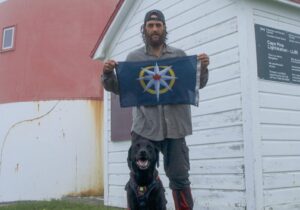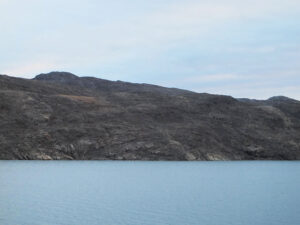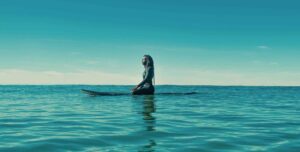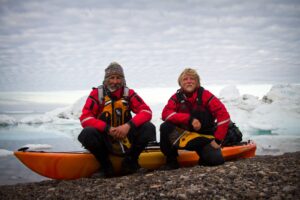As the wan Antarctic sun creeps higher in the sky every day, several manhaulers prepare to test themselves on the coldest continent. Once again, subtle qualifiers and definition semantics abound, as the next wave of polar explorers attempt to bag firsts in Antarctica.
Let’s take a look at some of the 2018-2019 expeditions. We’ll cover the rest next week.
Lou Rudd – The Spirit of Endurance

Rudd (Left) with the late Henry Worsley. Photo: Lou Rudd
A Captain in the British Army, Lou Rudd is looking to complete a solo, unsupported, unassisted crossing of Antarctica. His route will take him from Berkner Island to the Ross Ice Shelf, via the South Pole. He will retrace the steps of his friend, the late Henry Worsley, who died of peritonitis attempting the crossing in 2016.
Rudd hopes to complete his expedition in 75 days, hauling 150kg of gear. He will not use a kite: the critical differentiator in order to claim an unassisted crossing. Like Worsley, however, he does plan to use a satellite phone and will stop at the edge of the 800km-wide Ross Ice Shelf rather than complete the full journey to the coast. Borge Ousland’s solo traverse in 1997 included the whole Ross Ice Shelf, but he was assisted by a small kite.
Barry Gray – Warming up for a solo traverse

A former Royal Marines Commando, Barry Gray has two Antarctic expeditions planned. Photo: The Sun
In case Rudd doesn’t make it, Barry Gray is looking to claim this purportedly first solo, unsupported, unassisted traverse of the continent in 2019. This season, he will ski from Hercules Inlet to the South Pole, a test run for the much longer route.
Gray has called his warm-up the first solo, unsupported and unassisted trek from North Berkner to the South Pole. However, the definition of unsupported and unassisted may be again in play, as Erling Kagge completed the same journey in 1993.
Jenny Davis and Matthieu Tordeur – Solos to the South Pole

Jenny Davis has competed in endurance events around the world. She is now turning her attention to Antarctica. Photo: Jenny Davis
Endurance athlete Jenny Davis and French adventurer Matthieu Tordeur will each undertake their own solo, unsupported and unassisted expeditions.
Davis has completed polar training expeditions in Norway and Alaska and taken part in endurance competitions around the world. Like Gray, she plans to travel from Hercules Inlet to the South Pole, starting in November. She is hauling 85-90 kgs of gear and supplies and aims to break 40 days.

Tordeur has completed a range of non-polar expeditions, from cycling the Karakorum Highway to kayaking the Seine. Photo: Matthieu Tordeur
Matthieu Tordeur will attempt the same route, hoping to become the first French national to accomplish the feat. Though lacking polar experience, he has completed training expeditions in Greenland, Norway and Svalbard with veteran guide Eric Philips.
Laval St Germain – Targeting the Explorers’ Grand Slam

Canadian Laval St Germain is the only Canadian to have summited Everest without oxygen. Photo: Laval St Germain
The Explorers’ Grand Slam has shape-shifted so many times that we’re not sure it can be saved. However, the modern definition seems fairly settled: Climb all seven of the highest peaks on each continent, and do full-length expeditions to both the North and South Poles. Canadian airline pilot Laval St Germain aims to tick off his final mountain in the set, 4,852m Mt Vinson. His expedition will, not incidentally, include skiing 1,300 km via the South Pole to the base of the mountain.






